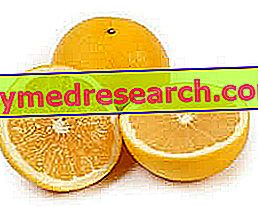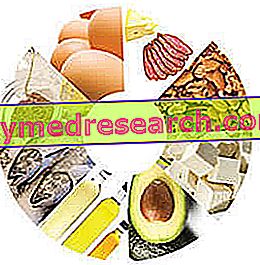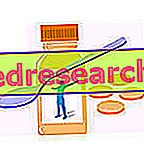Generality
Grapefruit is a esperide type fruit (ie a berry) classified in the citrus group. It is similar to orange, but thicker, yellow or pink, with a sour, bitter and less sweet taste. Its nutritional intake is excellent, as it is characterized by a very low energy coefficient, a lot of water, vitamin C and other antioxidants.

The grapefruit plant belongs to the Rutaceae family, Genus Citrus, Species paradises ; the binomial nomenclature of grapefruit is Citrus paradisi . For the truth, the grapefruit is NOT a tree originally present in nature; it is in fact a cross made by man between Pomelo and Arancio Moro ( C. maxima X C. sinensis ). With the passing of generations, grapefruit is acquiring all the characteristics necessary to be defined as a Species in itself.
Grapefruit is a winter fruit.
Properties and Contraindications
Grapefruit is mistakenly considered a slimming food. Specifying that there are NO slimming foods, let us try to understand the reason (if there is ...) that has led many people to define it as such.
Grapefruit is rich in naringenin or naringin, a bittering flavonoid with antioxidant and hypocholesterolemic properties. On guinea pigs, the administration of naringenin of grapefruit (also contained in other citrus fruits) has caused extremely positive metabolic effects, such as: the normalization of glycaemia, cholesterol and triglycerides, and a more pronounced weight loss. Obviously, the same weight loss results were never observed in humans (otherwise, we would have discovered the ultimate cure for obesity); ultimately, the grapefruit "is good", but "does not make you lose weight"! We say that it is a case analogous to that of bitter orange, or the citrus rich in synephrine, the well-known mimetic sympathetic amine responsible for considerable slimming effects on guinea pigs but not equally noticeable on humans.
| Composition for: 100g of Grapefruit - Reference values of the INRAN Food Composition Tables | ||||||||||||||||||||||||||||||||||||||||||||||||||||||||||||||||||||||||||||||||||||||||||||||||||||||||||||||||||||||||||||||||||||||||||||
 | ||||||||||||||||||||||||||||||||||||||||||||||||||||||||||||||||||||||||||||||||||||||||||||||||||||||||||||||||||||||||||||||||||||||||||||
Nutritional values (per 100 g of edible portion)
| ||||||||||||||||||||||||||||||||||||||||||||||||||||||||||||||||||||||||||||||||||||||||||||||||||||||||||||||||||||||||||||||||||||||||||||
Returning to naringenin or naringin, this also seems to have interactions with liver cells, in which it inhibits certain enzymes responsible for the metabolization of drugs and nutrients. Certainly this is not a positive aspect! A similar mechanism can induce catabolite accumulation and increase the risk of toxicity.
Furthermore, the ingestion of grapefruit juice may cause the link between the furanocumarine (contained in it) and CYP3A4 (cytochrome P450), causing the reduction of the first-pass metabolism of the intestine cells (about 24 hours); this causes an increase in the bioavailability of the drugs administered.
The inhibition of CYP3A4 (cytochrome P450) by grapefruit also has a certain cardio-vascular importance; some studies have indeed shown the increase in the absorption of felodipine (a drug against hypertension) in the presence of grapefruit juice, with a consequent reduction in pressure and an increase in heart rate.
The same mechanism also seems to work in the absorption of certain statins (simvastatin, lovastatin and atorvastatin) but not significantly in others (pravastatin, fluvastatin and rosuvastatin). This can have serious health consequences, such as rhabdomyolysis and renal failure (especially in the elderly).
The association between grapefruit and anxiolytics has shown a certain increase in sedation, while the drug for the heart β-blocker acebutolol has instead shown a lower efficacy (but it is not clear why).
Grapefruit juice then increases the toxicity of certain antiarrhythmic drugs (amiodarone, quinidine, propafenone and carvedilol) and causes severe systemic vasodilation (especially in the presence of nitrates) with the use of products against erectile dysfunction (sildenafil, tadalafil, vardenafil ).
Ethyl alcohol and nicotine have also shown poor interactions with grapefruit juice.
The table below, kindly made available by the "Farmaco-vigilaza Calabria" site, summarizes the various drug interactions discovered with grapefruit to date.

Nutritional Features
Compared to the average, grapefruit is a particularly poor fruit of simple sugars and calories. Instead it brings high concentrations of water and only traces of protein. The fiber is not particularly abundant. Lipids and cholesterol are absent.
As far as vitamins are concerned, grapefruit contains good amounts of vit. C; concerning mineral salts, it contains mainly potassium.



